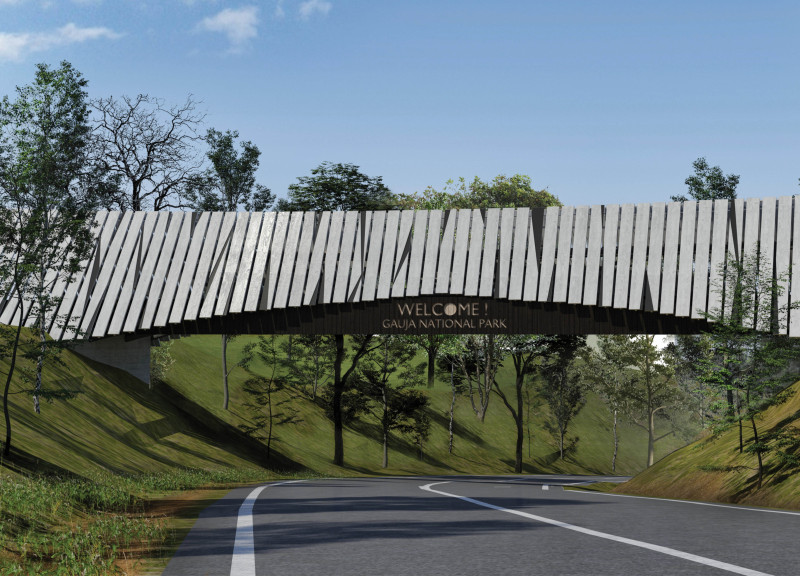5 key facts about this project
The Two Souls Bridge in Gauja National Park, located near Sigulda City, represents a blend of functionality and a connection to nature. It serves an important role by linking the urban area of Sigulda with the diverse attractions of the national park. The design aims to create a welcoming atmosphere, one that respects local culture while meeting the practical needs of visitors.
Design Concept
The concept of the bridge emphasizes a close relationship with its natural surroundings. It draws on traditional elements while addressing modern needs for urban transport. The bridge links the city to features within the park, including a children’s playground, while offering views of the nearby lake. This approach encourages interaction and enjoyment of the landscape.
Structural Features
The bridge is supported by a sturdy reticular steel frame. This design allows it to handle a large number of pedestrians. The visual lightness of the structure adds to its appeal. Attention to accessibility means that everyone can comfortably move across the bridge, making it an inclusive space for all visitors.
Material Integration
The design evokes the local environment through its choice of surfaces. Wood boards are arranged to imitate the texture of birch trees found in the park. This connection to the local flora reinforces an appreciation for the natural beauty surrounding the structure.
Engagement Elements
A key feature is the Info Point and Observation Deck, which enhances the visitor experience. It provides information about the park, encouraging people to learn more about the natural world around them. Additionally, the incorporation of a Tibetan Bridge element invites exploration, fostering a sense of adventure among visitors.
The bridge concludes with a design that not only reflects the surrounding landscape but also enriches the experience for all who travel across it.


























